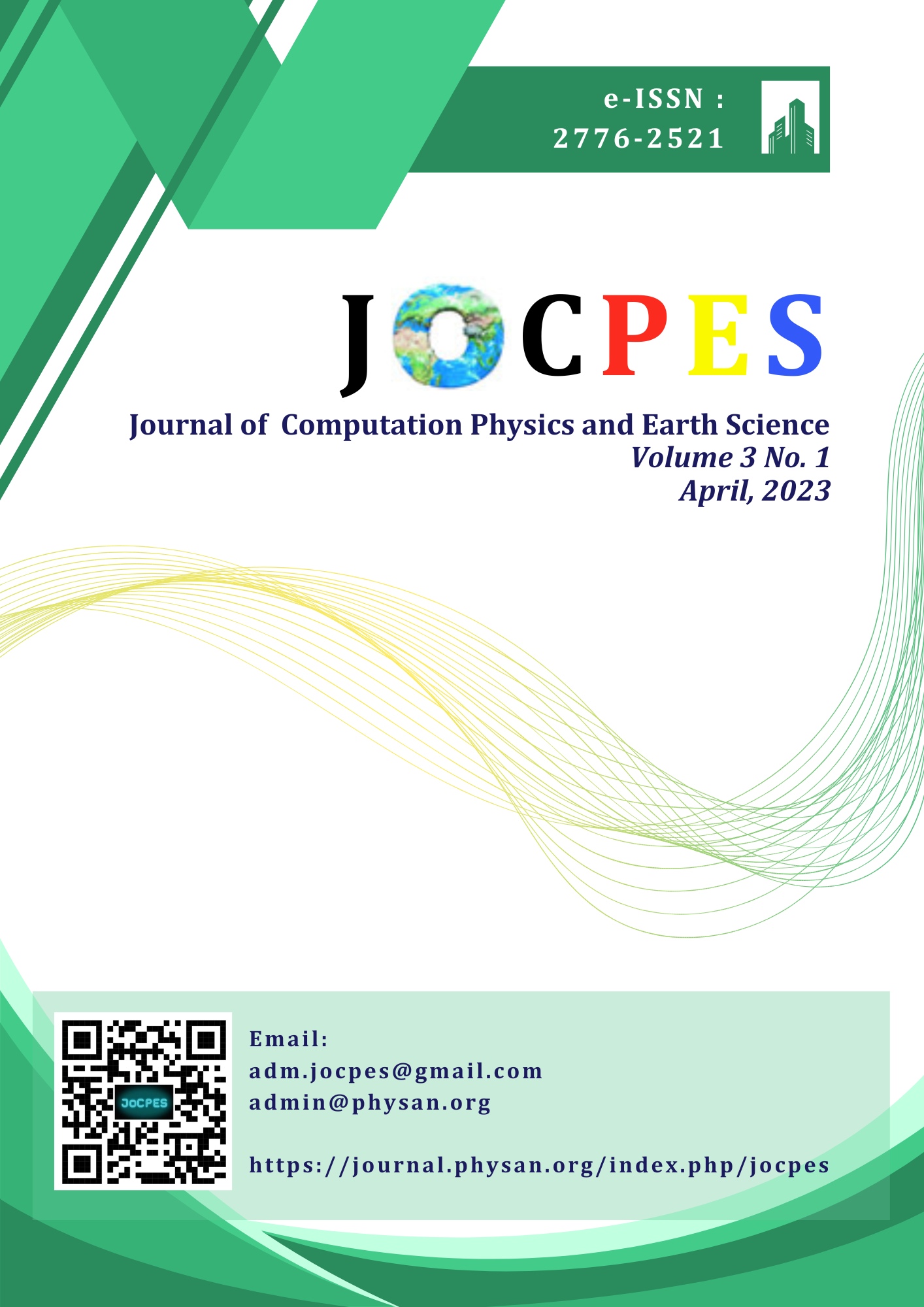Model of Lightning Strike Risk to Humans Based on Spatial Analysis and Environmental Factors
Main Article Content
Abstract
Lightning strikes pose significant threats to human safety and infrastructure, particularly in tropical regions like Indonesia with high lightning activity. This study aims to develop a predictive model of lightning strike risk to humans based on spatial analysis and environmental factors, utilizing data on lightning distribution, land use, population density, and meteorological parameters. Using probabilistic decision trees and tropical lightning formulas, the model identifies key predictors, including rainfall, land use patterns, and humidity, which influence lightning density. The results reveal that densely populated areas with high lightning activity, such as parts of Java and Sumatra, are particularly vulnerable. Spatial risk maps generated from the model highlight high-risk zones, providing critical insights for disaster mitigation planning and infrastructure protection. Furthermore, the study emphasizes the significant correlation between lightning density, land use, and population exposure, offering a comprehensive framework for understanding lightning risks. This predictive model not only serves as a tool for early warning systems and sustainable spatial planning but also underscores the importance of integrating environmental and spatial data for effective lightning risk mitigation. Future research should incorporate temporal lightning variations and field validation to refine the model and enhance its applicability.
Downloads
References
M. L. Akinyemi, A. O. Boyo, M. E. Emetere, M. R. Usikalu, and F. O. Olawole, “Lightning a Fundamental of Atmospheric Electricity,” IERI Procedia, vol. 9, pp. 47–52, 2014, doi: 10.1016/j.ieri.2014.09.039.
U. G. D. Maduranga and M. Edirisinghe, “Lightning Climatology and Human Vulnerability to Lightning Hazards in a School Community: A Case Study in Sri Lanka using LIS Data from TRMM Satellite,” International Journal of Disaster Management, vol. 4, no. 3, pp. 29–50, Dec. 2021, doi: 10.24815/ijdm.v4i3.22068.
R. A. Sihombing, J. F. Hutagalung, and J. Br. Tambunan, “Utilization of Lightning Energy As a Lightning Power Plant to Optimize Lightning Potential in Medan City,” Al-Fiziya: Journal of Materials Science, Geophysics, Instrumentation and Theoretical Physics, vol. 5, no. 2, pp. 87–94, Jun. 2023, doi: 10.15408/fiziya.v5i2.25926.
D. S. Helman, “Catching lightning for alternative energy,” May 2011. doi: 10.1016/j.renene.2010.10.027.
X. Zhang, L. Dong, J. He, S. Chen, and R. Zeng, “Study on the Effectiveness of Single Lightning Rods by a Fractal Approach,” 2009.
J. Mäkelä, E. Karvinen, N. Porjo, A. Mäkelä, and T. Tuomi, “Attachment of Natural Lightning Flashes to Trees: Preliminary Statistical Characteristics,” 2009.
S. M. Das, G. M. Kumar, and S. Sampath, “Investigations into Mechanisms of Involvement of Objects and Personnel in Lightning Disasters,” 2009.
A. Mosaddeghi, D. Pavanello, F. Rachidi, M. Rubinstein, and P. Zweiacker, “Effect of Nearby Buildings on Electromagnetic Fields from Lightning,” 2009.
U. Kumar, “Investigation on the Potential Rise and Currents in Insulated Mast Scheme with Single Tower During Stroke Interception,” 2010.
R. Vishnu, S. M. Das, S. Sampath, and G. M. Kumar, “Detection of Possible Thunderstorm Formation Inferred from Weather Element Changes at Ground Level on a Mountain Slope,” 2010.
E. A. Badran, M. E. M. Rizk, and M. H. Abdel-Rahman, “Analysis and Suppression of Back-Flow Lightning Surges in Onshore Wind Farms,” 2011.
R. B. Raysaha and U. Kumar, “Investigation on the Interaction of Secondary Current Pulses with the Main Wavefront,” 2011.
V. A. Rakov, “Lightning Discharge and Fundamentals of Lightning Protection,” 2012.
T. Disyadej and S. Grzybowski, “Laboratory Study of the Lightning Attractive Width for Transmission Lines,” 2012.
M. R. Ahmad, M. R. M. Esa, M. Rahman, V. Cooray, and E. Dutkiewicz, “Lightning Interference in Multiple Antennas Wireless Communication Systems,” 2012.
C. Neuwirth, W. Spitzer, and T. Prinz, “Lightning Density Distribution and Hazard in an Alpine Region,” 2012.
A. Kalair, N. Abas, and N. Khan, “Send Orders for Reprints to reprints@benthamscience.net Lightning Interactions with Humans and Lifelines,” 2013.
M. E. M. Rizk, E. A. Badran, and M. H. Abdel-Rahman, “Send Orders for Reprints to reprints@benthamscience.net FDTD Calculation of Transient Electromagnetic Fields in the Grounding System of Wind Towers Due to Direct Lightning Strikes,” 2014.
S. Guo, J. Wang, R. Gan, Z. Yang, and Y. Yang, “Experimental Study of Cloud-to-Ground Lightning Nowcasting with Multisource Data Based on a Video Prediction Method,” Remote Sens (Basel), vol. 14, no. 3, Feb. 2022, doi: 10.3390/rs14030604.
“Lightning and tall structures t.”2021. https://journal.physan.org/index.php/jocpes/index (accessed Feb. 14, 2025).

